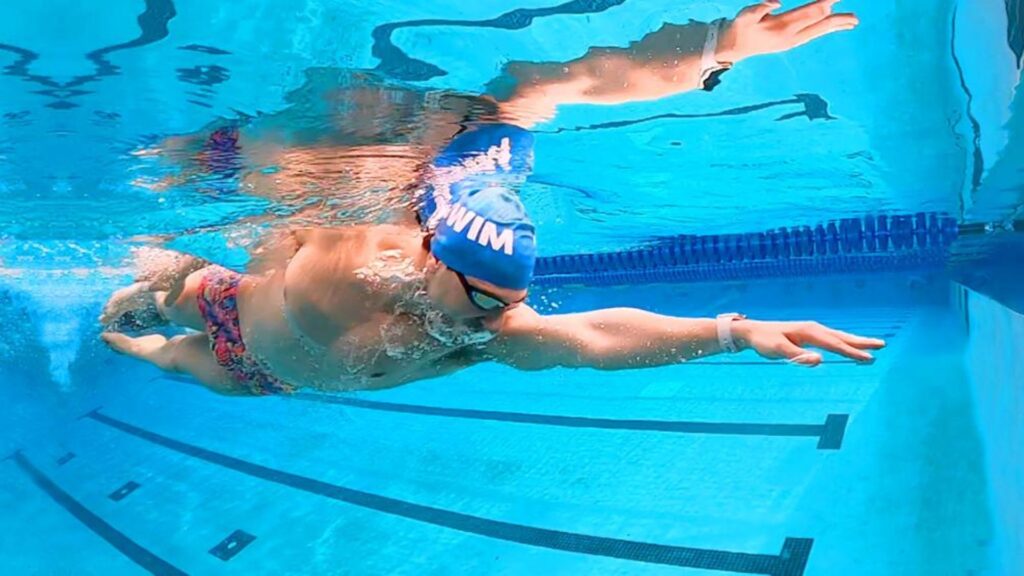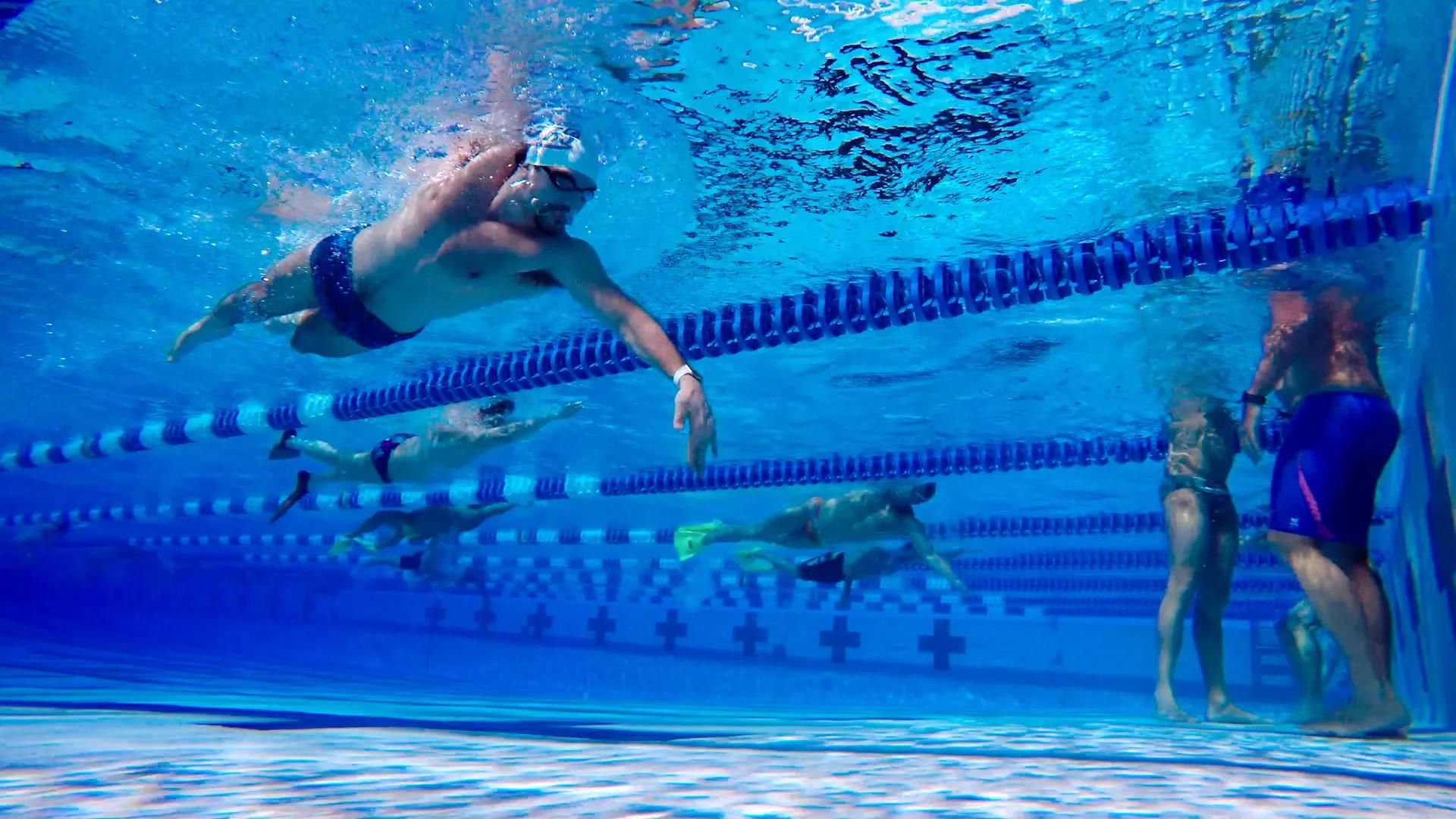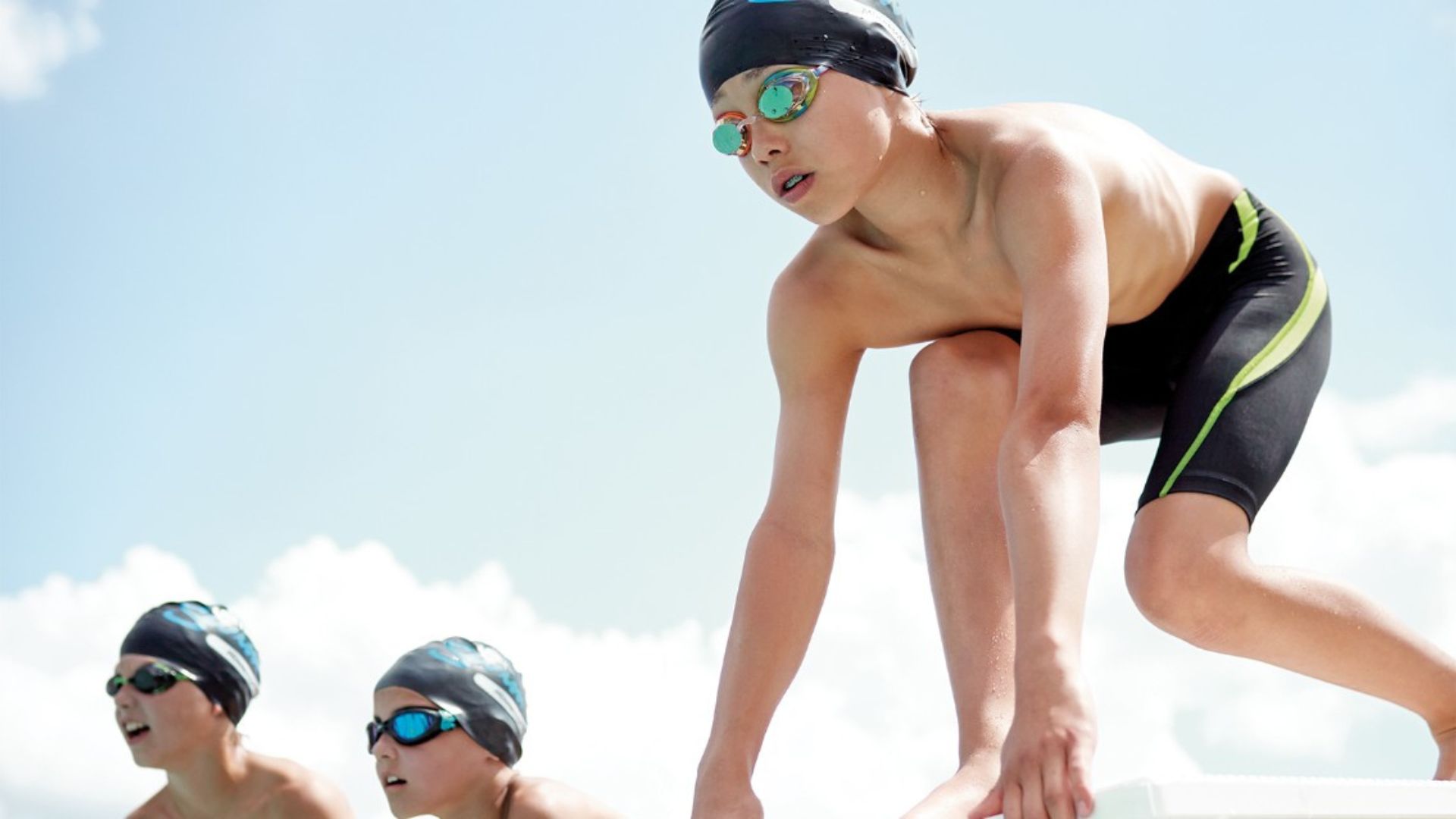Improving speed in swimming requires a combination of technique refinement, strength training, and efficient practice drills. Here are some top swimming drills known for enhancing speed:

Freestyle Catch-Up Drill
Improving speed in swimming begins with refining technique through drills like the Freestyle Catch-Up Drill. This drill is designed to enhance stroke mechanics and coordination. Swimmers perform freestyle with one arm while keeping the other arm extended forward. This encourages a complete stroke cycle and helps synchronize the movements of both arms, promoting a more efficient and powerful stroke.
Kickboard Sprint Drill
A crucial aspect of improving swimming speed is developing strength, particularly in the legs for propulsion. The Kickboard Sprint Drill is instrumental in targeting leg strength and power. Swimmers hold onto a kickboard and execute short, intense sprints using only their legs. This drill emphasizes rapid, forceful kicks while maintaining proper body alignment to minimize drag in the water.
Underwater Dolphin Kicking
Underwater Dolphin Kicking is a drill focused on enhancing core strength and underwater propulsion, both critical for speed improvement in swimming. Swimmers push off the wall and perform dolphin kicks underwater for maximum distance. This drill emphasizes maintaining a streamlined position and generating power from the core muscles.
Interval Training
Interval training plays a pivotal role in improving both endurance and speed in swimming. This training method involves performing sets of sprints with structured rest intervals tailored to individual training goals. For instance, swimmers might complete sets such as 8 x 50 meters freestyle sprints with 30 seconds of rest between each sprint. Interval training helps swimmers build cardiovascular fitness, improve their ability to sustain high-intensity efforts, and develop the speed necessary to excel in races.
Resistance Band Drills
Incorporating Resistance Band Drills into a training regimen strengthens key swimming muscles and enhances power. Swimmers attach a resistance band to a fixed point and perform simulated swimming strokes against the resistance. This drill targets muscles essential for powerful strokes, such as the shoulders, back, and core.
Single-Arm Drill
The Single-Arm Drill is a valuable technique refinement exercise that enhances stroke mechanics, balance, and body rotation in swimming. Swimmers focus on swimming freestyle using only one arm while keeping the other arm at their side. This drill allows swimmers to concentrate on the finer details of their stroke technique, such as arm positioning, hand entry, and body rotation.
Turn Drills
Efficient turns are crucial for maintaining momentum and speed during races. Turn Drills help swimmers optimize their transitions in the water, minimizing time spent turning and maximizing push-off power. Swimmers practice flip turns and open turns repeatedly, focusing on technique and timing.
Pace Clock Workouts
Pace Clock Workouts are instrumental in developing speed and timing awareness in swimming. Swimmers use a pace clock to time specific intervals for sets of swims, adjusting interval times based on their training objectives. This training method helps swimmers learn to pace themselves effectively and build speed over varying distances.
Race Simulation Sets
Race Simulation Sets are designed to prepare swimmers for competitive conditions and enhance mental toughness. Swimmers replicate race distances and conditions during training, focusing on maintaining technique and speed under pressure. This drill allows swimmers to practice race strategies, refine pacing tactics, and build confidence in their ability to perform at peak levels during competitions.
Video Analysis
Video Analysis provides valuable visual feedback that helps swimmers refine technique and identify areas for improvement. Swimmers record their swims and review the footage with a coach or mentor to analyze stroke mechanics, body position, and efficiency in the water. This detailed feedback allows swimmers to pinpoint strengths and weaknesses in their technique, make necessary adjustments, and enhance overall performance.
Conclusion



